Archive for the "V-Day" Category
Posted — Filed under
V-Day
Tagged — No Comments
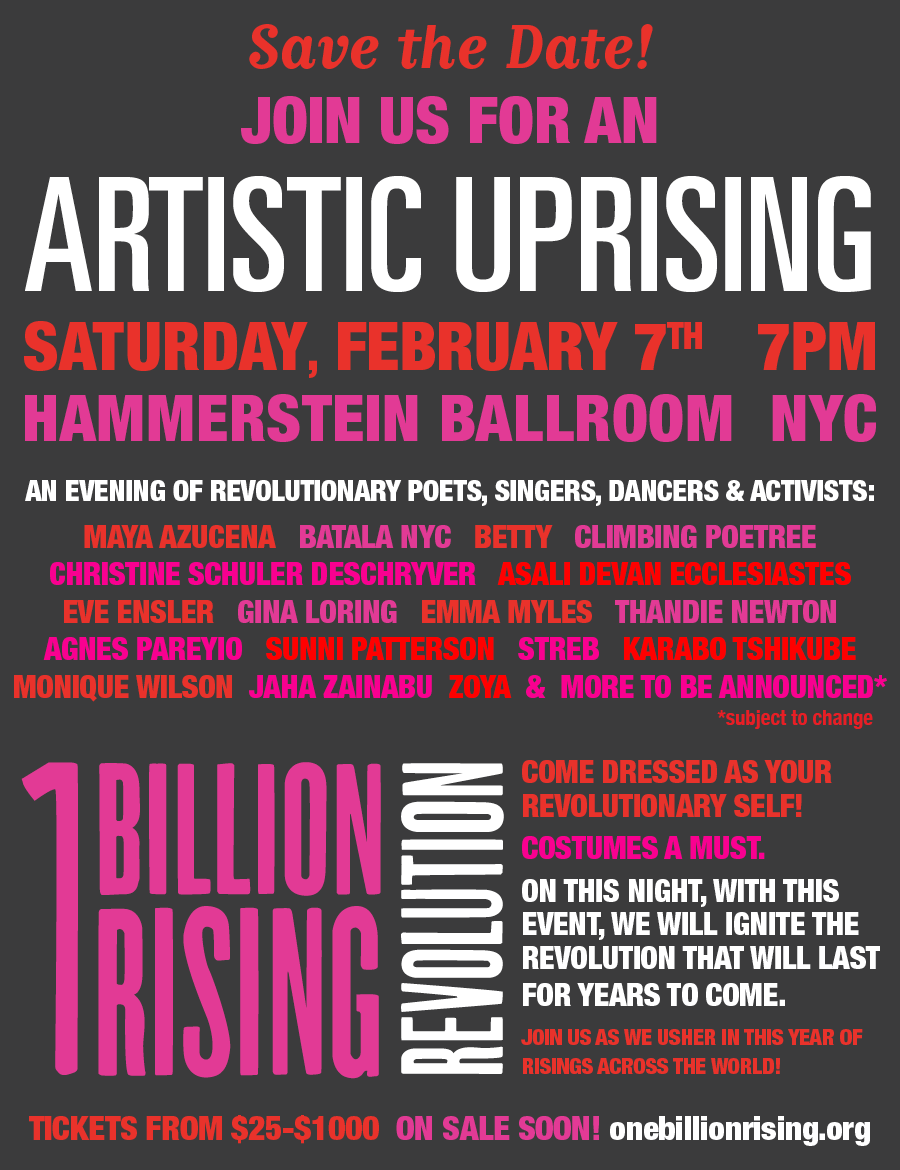
Mark your calendars, the REVOLUTION is coming to NYC on 7 February!
In the tradition of our 2001 V-Day event at Madison Square Garden and our 2008 ten year anniversary event at the Louisiana Superdome, V-Day/One Billion Rising is once again pushing the edge in a one-night-only event at the Hammerstein Ballroom, that will bring together revolutionary poets, singers, dancers and activists!
TICKETS on sale soon at onebillionrising.org
Posted — Filed under
V-Day
Tagged — No Comments
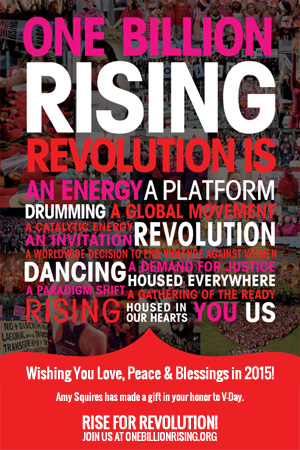 A V-Card supports the worldwide movement to end violence against women and girls and is the perfect gift for the Holidays!
A V-Card supports the worldwide movement to end violence against women and girls and is the perfect gift for the Holidays!
Make a donation to V-Day on behalf of your friends and loved ones. V-Day will send a specially designed 2014 holiday V-Card letting them know of their unique gift.
To send a V-Card on the donate page, check the box next to “Donate on behalf of a loved one?” labeled “Yes, I would like to send a V-Day e-card” and fill in the rest of the information to finish designing your gift.
*December 31st is the last day to make charitable donations in order to claim them on your 2014 tax return. 88 cents of every dollar you give goes straight to ending violence against women and girls.
Posted — Filed under
V-Day
Tagged — No Comments
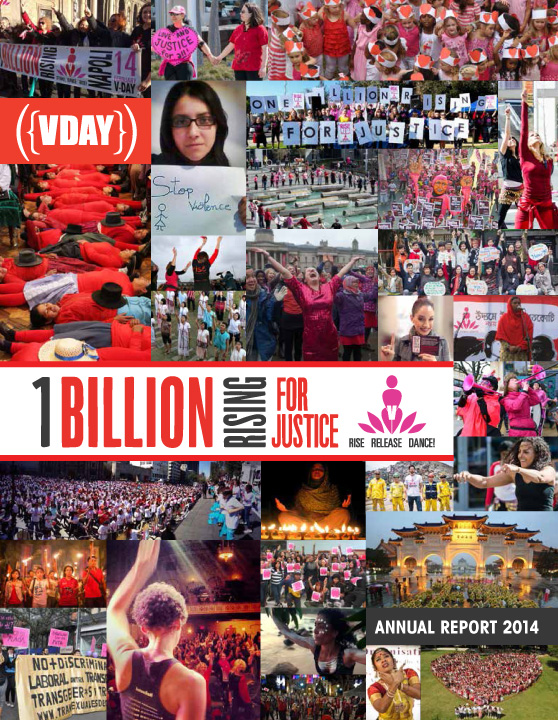 It is always our pleasure to share the powerful work of bold and outrageous activists across the world who are fighting to end violence against women and girls.
It is always our pleasure to share the powerful work of bold and outrageous activists across the world who are fighting to end violence against women and girls.
2014 was no different, it was a transformative year for V-Day and One Billion Rising, where every rising was part of a collective energetic decision to end violence and racial, environmental, economic and gender injustice.
We stand in awe of what we were able to accomplish as a movement, and we can only do what we do with your help! We hope you enjoy this snapshot of another phenomenal year.
Our 2014 Annual Report – ONE BILLION RISING FOR JUSTICE documents the magnitude of the incredible action that you made possible. We invite you to read it, explore and reflect on the power of our global solidarity.
In our ongoing efforts to be sustainable, we are offering the report in an interactive online format. We hope you enjoy it.
CLICK HERE for the 2014 Annual Report – ONE BILLION RISING FOR JUSTICE >
As our One Billion Rising campaign builds even further, we hope you will continue to join us in the REVOLUTION. We ask that you consider making a donation to support our work. Every donation you make ensures art and activism is at the core of our work to empower women and girls worldwide. We are so lucky to have you with us. You can donate online at vday.org/donate
With deepest gratitude and V-love,
V-Day core – Eve, Susan, Cecile, Christine, Monique, Purva, Shael, Tony, Kate, Amy, Laura, Carl & Kristina
Support the global movement to end violence against women and girls. DONATE to V-Day* >
CLICK HERE for the 2013 Annual Report – ONE BILLION RISING >
*December 31st is the last day to make charitable donations in order to claim them on your 2013 tax return. 88 cents of every dollar you give goes to ending violence against women and girls. V-Day is a top rated charity on Guidestar and Charity Navigator.
WANT TO GET INVOLVED?
– VIEW the 2014 Annual Report – ONE BILLION RISING FOR JUSTICE >
– REGISTER Your Event on the One Billion Rising Revolution map >
– WATCH “One Billion Rising for Justice” >
– SHARE Your Revolution via video, words, song, art, or poetry >
– MEET the Global Coordinators >
– DONATE to V-Day >
Posted — Filed under
V-Day
Tagged — No Comments
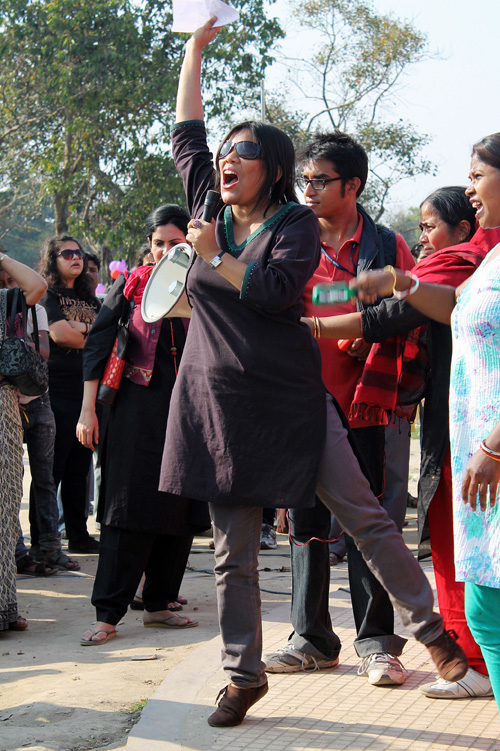
Dance can set you free. It can liberate your body and liberate your mind. That is what I have learned in my own life and that is the lesson I remember while working with women who have been taught through violence to see their bodies as disgusting, shameful, or ruined. Every day I see dance undoing this shame and setting individuals free.
During the early years of my life, I grew up in a village outside of Kolkata before moving into the city with my family. When I was 13, my mother was diagnosed with cancer. I was an only child; I spent three years watching her die. The only dance lessons I had ever had were in a strict academy and I couldn’t stand the rules; I am a born rebel. However, three months before my mother passed, I started to dance in my own way, finding my own style. I saw then that dance is not just about aesthetics or entertainment. It is about something deeper; it is about freeing the body to express itself, releasing whatever is within you. I danced through my mother’s death.
I went on to train with an influential Indian dancer late Dr. Manjusri Chaki Sircar who was known for incorporating feminist theory into dance. In university I studied sociology, focusing on violence against women and criminology; I kept returning to my belief that dance could be used to deal with some of the human behavior about which I was studying.
Then one day in 1996, I was walking through the Kolkata Book Fair when I saw a poster put up by the anti-human trafficking organization, Sanlaap. On it was a picture of a girl and a poem that ended with the words, “I am no more bride to be. I am no more mother to be. I am no more future to be.” These words struck me. I thought maybe dance could be a tool to help these women. I volunteered with the organization and as I got to know the women there, I discovered that survivors of abuse, rape, and violence often become separated from their bodies. They have been taught by their abusers that their bodies are sites of shame; the women were cutting themselves off from their bodies so as not to belong to them.
I began to work with these women in a creative dance process. It wasn’t about saying, move your leg here, put your arm there. It was about helping them to find a way to express themselves and to see their bodies as the source of their power. I saw women who had closed down come back into their bodies. Much of the pain that was locked away in the body began to be released. Women who had been rescued from sex trafficking told me their bodies were impure and filthy. Through dance, they began to see that their body is theirs, that it is a creative tool that nobody can ruin or pollute.
Could more women find this freedom? Could I somehow provide needed job opportunities? With the help of five survivors who I had met while volunteering, we decided to create a group called Kolkata Sanved that would take this dance therapy to abused women throughout the city and train them, in turn, to teach it to more women. We wanted to give individuals a tool so they could change themselves. We wanted to create a wave of dance that would wash through society. Very often in when working with survivors, physical power is overlooked and individuals are seen as victims. This is something that must change. At Kolkata Sanved we see individuals as proactive advocates who can find empowerment through a process of struggle, freedom, and change.
I remember a girl who used to come and warily watch my classes. She wouldn’t make much eye contact and she was sullen, detached. After the class, she would try to persuade the other girls that it was a class for mad people. I went and sat with her. Slowly she began to tell me the story of her life: her parents had died when she was young and she was sent to live with her grandmother where an older relative raped her. “I can’t see anything positive in life,” she told me. “Whatever happens, I only feel terrible and ashamed.” There are hundreds of stories like hers.
After we spoke she began, tentatively, to join in with some of the movements. As months passed, she began to feel dance liberating something within her. It made it possible for her to talk about her pain and to overcome it. The bonding that occurred among students in the class and watching others overcome their pain were crucial experiences for her.
Today, that girl is one of our senior dance movement therapy practitioners. She did something she thought she never could; she got married and now she is pregnant. It is difficult to explain this process with language. Dance is about making it possible to love your body and to love yourself. Without talking, you can convey a message and find autonomy; you can reclaim your power. Our entire approach is based on Dance Movement Therapy process including discussions, group feedback and self reporting so that children and individuals have a space in which to have their voices heard.
I am thrilled to be part of One Billion Rising. It presents a way to take our philosophy to the global stage. Our goal is to see the one billion women on this planet who have been abused rise up as one. I know some people think, why dance? Why not something more “serious” or more political? I know and the women I work with know that dance is both of these things; dance is a symbol of all we wish to see in the world. I believe that women across the world can dance until we are free.
As told to the One Billion Rising team.
To contact Sohini, visit her website www.kolkatasanved.org or email kolkatasanved(at)gmail.com.
1 in 3 women across the planet will be beaten or raped during her lifetime. That’s ONE BILLION WOMEN AND GIRLS. Every February, we rise – in hundreds of countries across the world – to show our local communities and the world what one billion looks like and shine a light on the rampant impunity and injustice that survivors most often face. We rise through dance to express joy and community and and celebrate the fact that we have not been defeated by this violence. We rise to show we are determined to create a new kind of consciousness – one where violence will be resisted until it is unthinkable.
This year we are rising for Revolution. We are initiating a new series, “Building to One Billion Rising Revolution,” where we will be sharing stories of extraordinary activists who embody the creative radical shift in consciousness required to bring about CHANGE.
Grassroots Activists who fight for justice and liberation with passion and joy.
Send us your stories. Stories change everything.
V-Day assumes no liability for any statements made by you on this page or that you otherwise submit to V-Day. Please remember that your post is public. Do not post real names, including your own, in association with your story.
Posted — Filed under
V-Day
Tagged — No Comments
1 in 3 women across the planet will be beaten or raped during her lifetime. That’s ONE BILLION WOMEN AND GIRLS. Every February, we rise – in hundreds of countries across the world – to show our local communities and the world what one billion looks like and shine a light on the rampant impunity and injustice that survivors most often face. We rise through dance to express joy and community and and celebrate the fact that we have not been defeated by this violence. We rise to show we are determined to create a new kind of consciousness – one where violence will be resisted until it is unthinkable.
This year we are rising for Revolution. We are initiating a new series, “Building to One Billion Rising Revolution,” where we will be sharing stories of extraordinary activists who embody the creative radical shift in consciousness required to bring about CHANGE.
Grassroots Activists who fight for justice and liberation with passion and joy.
Send us your stories. Stories change everything.
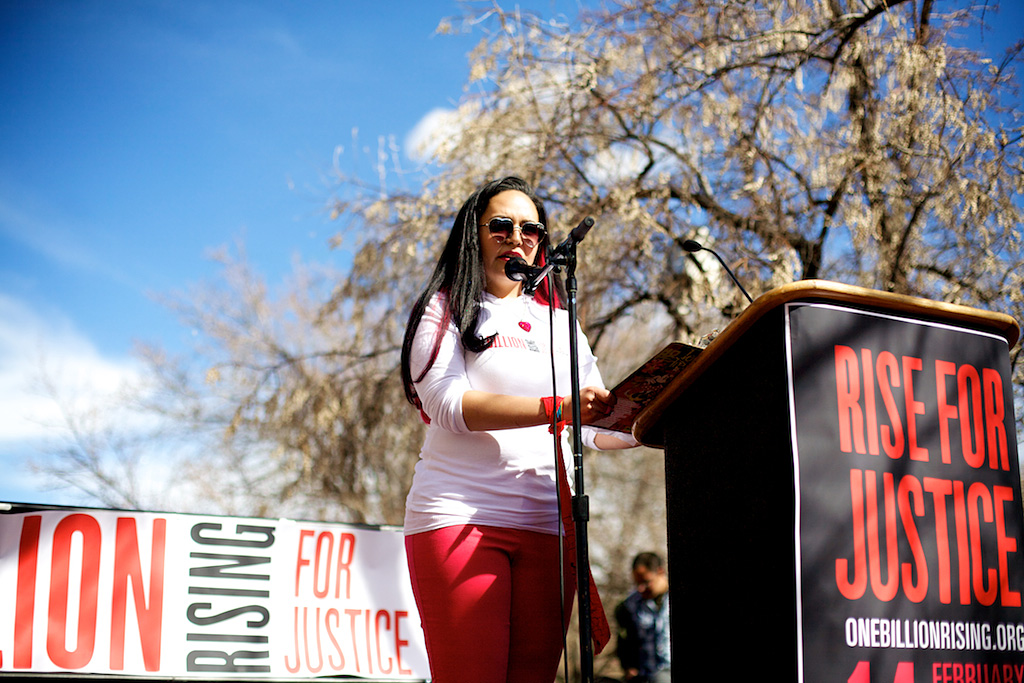
This post in the Building to One Billion Rising REVOLUTION Series comes from Jessica Montoya.
Jessica Eva Montoya is the Family Specialist at Adelante Program working with homeless families of Santa Fe, NM and Global Coordinator for One Billion Rising Santa Fe.
Two years ago, I stood in front of a crowd of thousands of people at the One Billion Rising in Santa Fe, and I told my story. The air was crisp and clean and I felt I didn’t need to eat, or drink – there was enough to nourish me right there, in that crowd of women and men who were preparing to dance. For so long, I had been ashamed of what I had been through. Now I could talk about it, and I had all these people cheering me.
I told them that in my life, I have seen the worst of male behavior, in two very different ways. Before I was able even to talk, one of my older relatives began to rape me. My best guess is that I was one year old. I had been born with amniotic band syndrome – so I am missing half my left index finger, while on my right hand, my middle finger and ring finger and fused together. I am missing two toes on my right foot, and my left leg was nearly severed and I have two toes fused together on my left foot. That didn’t stop him.
I was raped serially until I was in fifth grade. By that time, I was acting out a lot, and was in trouble all the time at school. Sometimes kids would pick on me because of my disability, and I would fight back. One time a boy called me retarded, and I climbed over the desk and slapped him. Sometimes I did worse things. When you have abuse that nobody has acknowledged, it festers and grows inside of you it has to seep out of every orifice of your body – it has to come out of your pores, it has to come out of your mouth, I would find myself spewing things I didn’t mean. I don’t have that filter – I think the more you cover it up, the more you try to numb it with drugs or alcohol or in my case, as I got older, men and sex and danger.
I didn’t tell my mom about the abuse because I wanted my relative to be punished. I told her because I thought maybe she would understand, and I wouldn’t be in trouble so much. She immediately called the police, and my relative was taken away. I didn’t see him for many years, until – well, I’ll get to that in a moment.
One of the great sources of comfort and joy in my life was my mom’s younger sister, Kat. She was always real fun. She wore tie-die, she never wore make-up – she wore her hair down, carefree. She was not very serious about life, or about anything. She was always laughing, always a jokester. I had my first taste of alcohol with Kat, and smoked joints with her. She lived with my grandmother and looked after her. As I got older, Kat was sliding into a more hardcore drug scene and had started to smoke crack.
I was quite angry as a teenager because of what had happened to me, and by the time I was fifteen, I had started dating an older cocaine dealer, and was firing guns in the street. Kat was involved with a guy called Pato, which means ‘duck’. He was her drug-dealer and her lover. One day, she picked up Pato and another guy took them to my grandmother’s house – she was away, visiting one of her other kids – and they smoked a p-dog. That’s marijuana with crack rocks broken into it.
Later, Pato testified that, as they sat in the kitchen, he had a hallucination that Kat was an alien, or a witch, and would kill him, unless he annihilated her first. He asked the other guy to fetch him a knife. He strangled Kat for fifteen minutes, then took the knife, and cut off her head. They took her body and her head and took it to a ditch. They buried her body there, and then drove 50 miles to the south, where they covered her head with gasoline accelerant, and burned it then buried it.
Kat was missing for two weeks. All we knew is there was an unbelievable amount of blood in my grandma’s house. I know it is wrong but I hoped that somehow Kat had got caught up in a murder – maybe somebody had forced her? – and that would mean she was still alive, hiding out somewhere.
Several things changed for me after Kat was murdered. My family became involved with a group who support the families of homicide victims, and soon after, I became a victims’ advocate in the DA’s office. Your job is to help victims’ families to understand the legal language, and to make sure they are represented and heard. My initial motive was revenge. I wanted to make sure that the man who did this to Kat never got out.
But then I began to read, and think, and I watched a film Eve Ensler had made, called ‘What I Want My Words To Do To You.’ It followed her work with women in upstate New York over eight years. Some of these women had committed serious crimes – murder, bombings. The women went through various writing exercises – they wrote the facts of their crime; they wrote a letter to their mom, telling her the truth; they wrote a letter to their unborn daughter. At the end of the writing exercise, they would see famous actresses like Marissa Tomei and Glenn Close come to the prison and act out what they had written.
I watched that film again and again, and it gave me the courage to look at the man who killed my aunt as a human being. I was able really to put a face to his name and see him as a person, a human being who was born and raised just like my aunt was. I felt I had to forgive him in order to move on with my life. I began to see that the most important thing is actually prevention. Revenge doesn’t bring anyone back. But prevention saves lives. If you can stop a young boy from becoming an offender, you can save women like Kat, or me.
That way of thinking led me to do one of the hardest things I’ve ever done. I decided to contact the older relative who raped me throughout my childhood. I went to his work – he worked at a local hardware store – and he agreed to come to my therapist’s office. He had never been punished back when it was revealed, because he was too young.
He actually showed up, which surprised me, and I read him a statement I had written – a bit like in the film. I read every memory I had ever remembered of him hurting me in any way. And finally he said – yes, I was there, and it did happen.
That’s all I wanted. Because often times, people who survive something like that don’t know if it really happened. You think – am I crazy? Did I imagine all this? But what he said confirmed everything that had happened. And that it was real and true, and he really gave me my life back at that point. When you are in relationships with someone and you aren’t sure what you remember, it’s hard because you think you are crazy. When I was able to have the only other person who was in the room with me at that time confirm – yes, the craziest possible memory you have is real and true, and it did happen – that was really freeing for me. It gave me my memories back and my life back.
That’s when I learned he had been abused too. I began to understand. He’s still got problems. He was recently in jail for being violent. But now I am in his life, he seems to want to change, and he is getting help. He is improving.
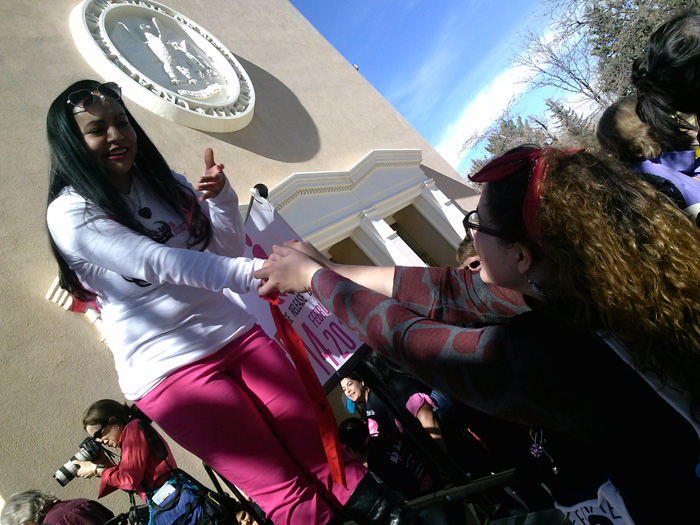
I have worked in a shelter for victims of domestic violence, and was the child advocate – it was my job to understand children and stand up for them and represent their interests. I see kids who have been dealing with a lot of trauma, and they need respite. I try to give them what my Aunt Kat gave me – a sense of fun and joy, where we do silly things, like paint nails or carve pumpkins. I like to think that in those moments of joy, my aunt Kat is living on.
I like to paint nails because my hands are different, so I like to share that celebration of my difference with other kids. I know it’s a tiny thing in the big scheme of things, but I think it helps.
I believe that by reaching out to kids who are facing violence and problems we are taking steps to prevent what happened to me and what happened to Kat happening to anybody else. It is far easier to train a puppy than to change a grown dog. I know men are not inherently bad. There have been so many good and loving men in my life, like my current boyfriend. I am interested in creating more good men.
To do that, we all have to come together and be willing to take a deep look at that dark hole we have been overlooking for so long. There’s a lot of secrets, there’s a lot of injustice, there’s a lot of bullshit that has perpetuated violence against women for centuries. Young men and boys are angry – but why? Defeated and humiliated men will try to make somebody else the defeated and humiliated one. Hurt people hurt people. We need to deal with the pain of men too.
To me, One Billion Rising – the day on which we want the one billion women who have been beaten or raped to rise as one and dance – is all about that. It is about love, and joy, and a vision of a society that people will want to join. And for me it is also about reclaiming my body. As a survivor of sexual abuse, I have sometimes been ashamed of my curves, and reluctant to wear tight clothing. I remember when I started growing boobs I was like – what the fuck is this shit?
But when I dance at One Billion Rising, I don’t feel any shame. I feel proud. I feel like I am flying. I know I am dancing for myself, for Kat – and for a world with better men, and better women, and a better way to live together.
This profile is part of the Building to One Billion Rising REVOLUTION Series
Posted — Filed under
V-Day
Tagged — No Comments
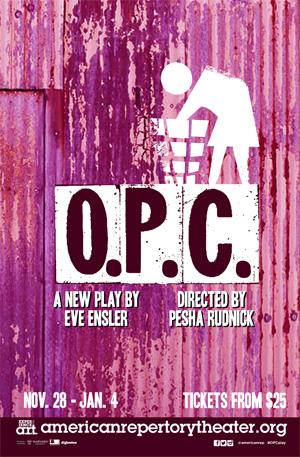 V-Day is so proud to be working with American Repertory Theater to offer you, our V-Day activists, a special discount rate to Eve’s new Play O.P.C. at the Loeb Theater in Cambridge.
V-Day is so proud to be working with American Repertory Theater to offer you, our V-Day activists, a special discount rate to Eve’s new Play O.P.C. at the Loeb Theater in Cambridge.
V-Activists receive $10 off all tickets for any show during the run starting today through 4 January.
To take advantage of this deal just enter the promotional code vday10 when selecting your tickets.
BUY TICKETS >
O.P.C. is a new comedy exploring consumption and politics that asks, “How are we to survive as a species if we insist on destroying the world we love?” A dumpster-diving freegan is doing just fine squatting in an abandoned apartment, but when her mother, a candidate running for the Senate, tries to make her toe the party line, radicalism comes into collision with mainstream liberalism. Mother and daughter wrestle with the inconvenient truths at the heart of consumer culture, tossed between political compromise and “obsessive political correctness.”
WATCH “The Creation of O.P.C.” >
LISTEN “Eve Ensler Tackles Capitalism, Consumption, Political Compromise In ‘O.P.C.‘” >
READ Q&A;: Eve Ensler on Hillary, Feminism, Revolution and Her New Play >
CHECK OUT these other FREE O.P.C events at A.R.T incuding silk-shares and talk-backs >
READ the Full O.P.C. Program >
LEARN About Freeganism and the Themes Discussed in O.P.C. in the Fall Guide >
Posted — Filed under
V-Day
Tagged — No Comments
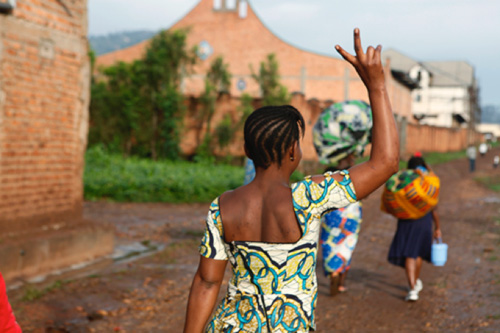
Photo Credit: Paula Allen
Today for “Giving Tuesday” we ask you to consider a donation to V-Day’s work to end violence against women and girls.
When you donate to V-Day, 89 cents of every dollar you give goes straight to ending violence against women and girls all over the world.
Thank you for making V-World possible!
V-Day is a California 501(c)(3) public charity and is one of the Top-Rated organizations on both Charity Navigator and Guidestar.
Posted — Filed under
V-Day
Tagged — No Comments
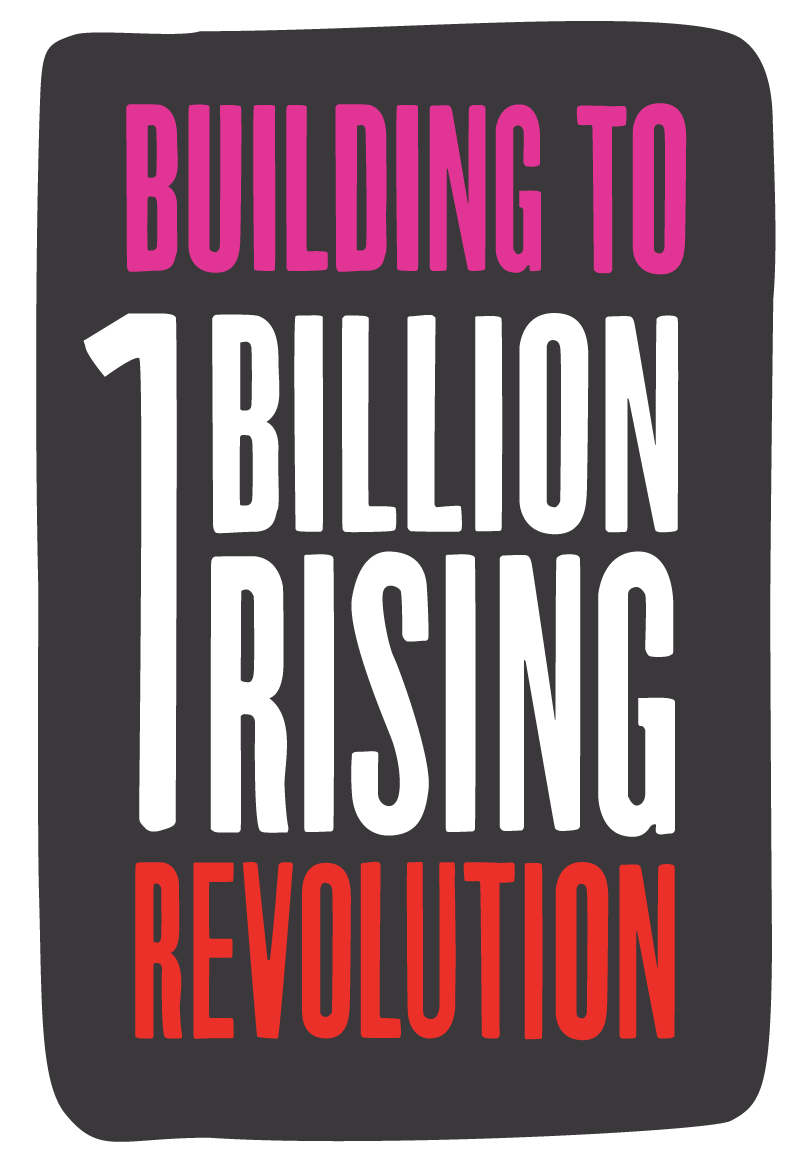
1 in 3 women across the planet will be beaten or raped during her lifetime. That’s ONE BILLION WOMEN AND GIRLS. Every February, we rise – in hundreds of countries across the world – to show our local communities and the world what one billion looks like and shine a light on the rampant impunity and injustice that survivors most often face. We rise through dance to express joy and community and celebrate the fact that we have not been defeated by this violence. We rise to show we are determined to create a new kind of consciousness – one where violence will be resisted until it is unthinkable.
This year we are rising for Revolution. We are initiating a new series, “Building to One Billion Rising Revolution” where we will be sharing stories of extraordinary activists who embody the creative radical shift in consciousness required to bring about CHANGE.
Grassroots Activists who fight for justice and liberation with passion and joy.
Send us your stories.
Stories change everything.
The series will appear in The Huffington Post
and on OneBillionRising.org. Kicking it off is long-time V-Day and One Billion Rising activist Agnes Pareyio, founder of Tasaru Ntomonok Initiative and the V-Day Safe House for the Girls.
27% Is Too Many, But It’s Also The Sign Of A Revolution
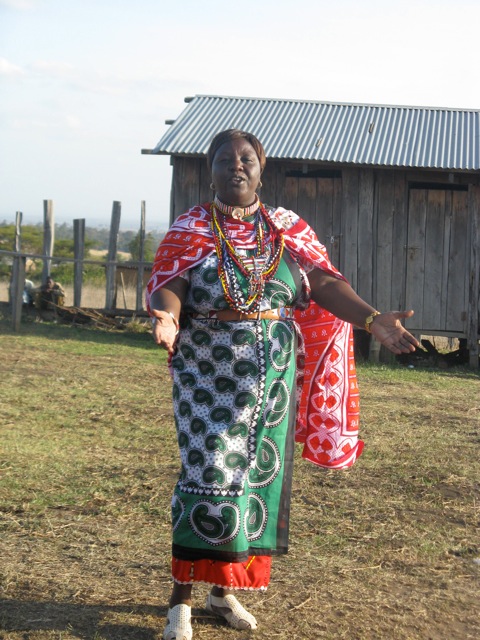 By Agnes Pareyio
By Agnes Pareyio
I was fourteen years old when my mother and grandmother announced that I was going to have my clitoris, my labia majora, and my labia minora cut out. They said if I resisted, I would be a coward. In my culture, the worst thing you can ever be called is a coward. What they did to me next caused me real harm, but it also gave me the cause of my life.
CONTINUE reading >
Inspired? SEND US YOUR STORIES.
Posted — Filed under
V-Day
Tagged — No Comments
On 20 November, City of Joy graduated its sixth class of 90 girls and women, bringing the total number of City of Joy Graduates to 492. In this new blog from Congo, our beloved V-Day Congo Director/Director of City of Joy Christine Schuler Deschryver brings us into the world of City of Joy and the lives of these incredible women who are turning their pain to power. Your support allows the City of Joy to continue to blossom.
DONATE HERE >
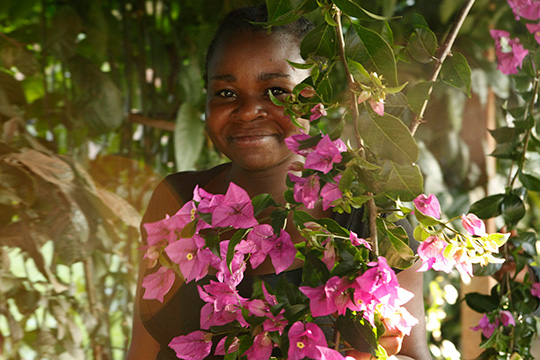
“Love is the most precious and contagious thing we see in the life of every person who lives and works at City of Joy. It is that thing and secret which triggers change at City of Joy.” – Christine Schuler Deschryver
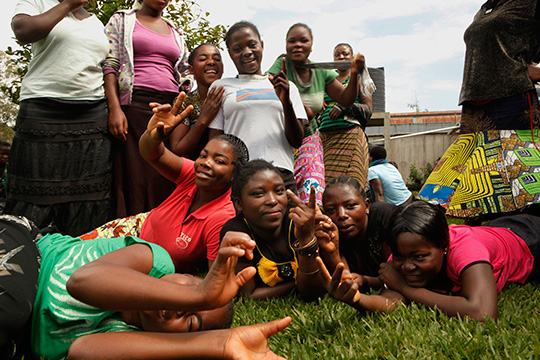
CONTINUE reading >
LEARN more about City of Joy >
DONATE to City of Joy >
Posted — Filed under
V-Day
Tagged — No Comments
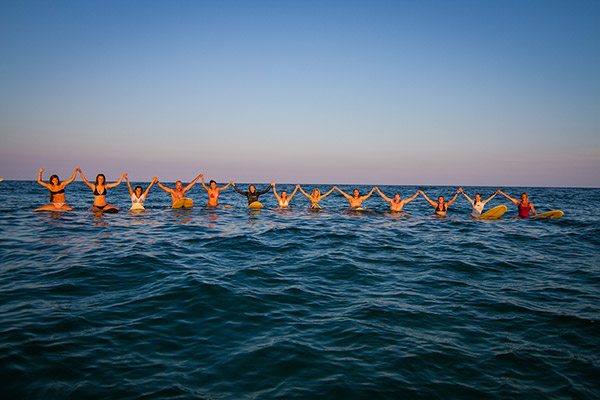
“I rise in opposition to the objectification and dehumanization of women…I rise for my motherhood, for my kin, for my loved ones. I rise because there is an imperative and dire need for a revolution. I rise for the one billion.” – One Billion Rising activist and surfer Kristin Thompson
READ the original article available online at Drift Surfing also available in print from Salty at Heart












